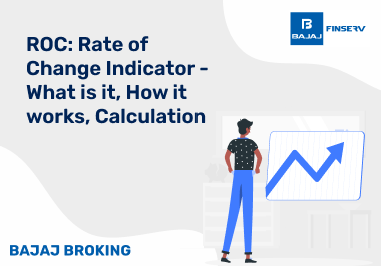Gross NPA and Net NPA are key measures used to assess the quality of a bank's assets. Gross NPA refers to the total amount of non-performing assets (loans where principal or interest payments are overdue for 90 days or more) without deducting any provisions.
The Gross NPA formula is:
Gross NPA = Total NPA (non-performing loans).
The Gross NPA ratio is calculated as:
Gross NPA Ratio = (Gross NPA / Gross Advances) × 100, reflecting the overall asset quality.
Net NPA, on the other hand, accounts for provisions set aside by the bank to cover potential losses. The Net NPA formula is:
Net NPA = Gross NPA – Provisions.
It shows the actual loss risk a bank faces. Understanding Gross NPA vs Net NPA is crucial, as Net NPA offers a clearer picture of financial health.
What is Gross NPA?
Gross NPA (Gross Non-Performing Assets) refers to the total amount of a bank's loans and advances that have stopped generating income due to non-repayment by borrowers. These are loans where the borrower has failed to make scheduled payments of interest or principal for a period typically exceeding 90 days. When this happens, the loan is classified as a non-performing asset (NPA). Gross NPA includes all such loans before any provisions or write-offs are made. It is a critical indicator of a bank’s asset quality, reflecting the extent of potential losses and the level of credit risk the institution is exposed to. A high Gross NPA ratio suggests poor asset quality and inefficiencies in credit appraisal and recovery processes, which can significantly impact the bank's profitability and financial stability.
The Gross NPA formula is:
Gross NPA = Total Non-Performing Assets (before provisions)
Gross NPA includes all types of NPAs—doubtful, substandards, and loss assets—without accounting for any provisions or write-offs made by the bank. It represents the absolute value of troubled loans on a bank’s books.
To better understand a bank's asset quality, the Gross NPA ratio is calculated as:
Gross NPA Ratio = (Gross NPA / Gross Advances) × 100
This ratio helps investors, regulators, and analysts assess how much of a bank’s loan portfolio is at risk. A higher ratio indicates deteriorating asset quality, while a lower ratio signals better control over lending practices.
If you’re looking to manage your investments and reduce exposure to bad loans, you might also consider options like an Open demat account, as it provides a platform to invest in equities and other financial instruments, minimizing exposure to high-risk assets like NPAs.
What is Net NPA?
Net NPA (Net Non-Performing Assets) refers to the portion of non-performing assets that truly reflects the potential loss a bank could face after adjusting for the provisions it has already made. While Gross NPA represents the total value of all loans that have defaulted (i.e., where the borrower has failed to make scheduled payments), Net NPA provides a more accurate picture of the bank's financial health. It does this by subtracting the provisions—funds the bank has set aside to absorb potential losses—from the Gross NPA. In essence, Net NPA highlights the actual risk exposure of the bank, helping investors and regulators assess the quality of the bank’s loan portfolio more realistically.
The Net NPA formula is:
Net NPA = Gross NPA – Provisions
Banks are required by regulatory authorities (like the RBI in India) to maintain a certain level of provisions based on the quality of assets. These provisions act as a buffer. So, the Net NPA reflects only that portion of bad loans that hasn’t been covered by this safety net.
This distinction is important when analyzing gross NPA vs net NPA. While Gross NPA measures the total exposure to bad loans, Net NPA highlights the uncovered risk, making it a more accurate measure of a bank’s asset quality.
The Gross NPA formula and Gross NPA ratio help in measuring total stress in the loan book, but Net NPA tells you how well a bank is prepared to handle that stress. Low Net NPA is generally a sign of strong financial resilience.
Key Differences Between Gross NPA and Net NPA
Understanding the differences between Gross NPA and Net NPA is essential for evaluating a bank’s asset quality and risk exposure. While both indicate stressed loans, they serve different analytical purposes in financial reporting.
Aspect
| Gross NPA
| Net NPA
|
Definition
| Total value of all non-performing assets before provisioning
| Portion of NPA remaining after deducting provisions from Gross NPA
|
Reflects
| Overall loan defaults
| Actual loss risk after accounting for provisions
|
Formula
| Gross NPA = Total NPAs (defaulted loans)
| Net NPA = Gross NPA – Provisions
|
Used For
| Assessing total stressed assets
| Understanding uncovered or real risk in NPAs
|
Provision Impact
| Does not include provisions
| Deduct provisions from Gross NPA
|
Regulatory Insight
| Indicates total problem assets on the books
| Shows how much is not yet provisioned
|
Gross NPA ratio relevance
| Helps understand overall stress (via Gross NPA ratio)
| Offers deeper insight into financial health
|
Example
| If total NPAs are ₹100 crore
| If provisions are ₹30 crore, Net NPA = ₹70 crore
|
Financial Health Indicator
| Useful for broad stress measurement
| Better for evaluating risk management quality
|
How To Calculate Gross And Net NPA?
Calculating Gross NPA and Net NPA is essential for assessing a bank's asset quality and understanding its risk exposure. Here's a more detailed explanation of how each is calculated:
1. Gross NPA Calculation
Gross NPA refers to the total value of loans that have become non-performing, meaning the borrower has defaulted on interest or principal payments for more than 90 days. Gross NPA reflects the total level of distressed loans on a bank's books without considering any provisions made by the bank for potential losses.
The Gross NPA formula is:
Gross NPA = Total Non-Performing Assets (which includes all loans in default).
Banks also calculate the Gross NPA ratio to understand the extent of defaulted loans relative to their total lending portfolio.
The formula for this is:
Gross NPA Ratio = (Gross NPA / Gross Advances) × 100
A higher Gross NPA ratio indicates that a significant portion of the bank's loan portfolio is at risk, which may signal issues with loan recovery or borrower repayment capacity.
2. Net NPA Calculation
Net NPA provides a clearer picture of the actual risk faced by the bank after accounting for provisions. Provisions are funds set aside by the bank to cover potential losses from NPAs. When calculating Net NPA, the provisions are subtracted from Gross NPA to show how many of the non-performing loans are still uncovered.
The Net NPA formula is:
Net NPA = Gross NPA – Provisions
This gives a more accurate measure of the bank’s actual financial exposure to bad loans.
To better illustrate the difference, the Gross NPA and Net NPA with examples show how provisions impact the total risk. For instance, if a bank has ₹100 crore in Gross NPAs and provisions of ₹30 crore, the Net NPA would be ₹70 crore, providing clearer insight into the bank’s financial resilience and ability to absorb potential losses.














